
Gerard Ter Borch Painting Reproductions 4 of 4
1617-1681
Dutch Baroque Painter
81 Gerard ter Borch Paintings
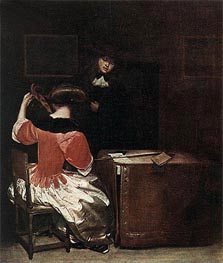
Music Lesson n.d.
Oil Painting
$1959
$1959
Canvas Print
$124.88
$124.88
SKU: GTB-9607
Gerard Ter Borch
Original Size: 69 x 58.5 cm
Pushkin Museum of Fine Arts, Moscow, Russia
Gerard Ter Borch
Original Size: 69 x 58.5 cm
Pushkin Museum of Fine Arts, Moscow, Russia
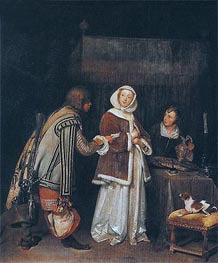
The Refused Letter n.d.
Oil Painting
$2660
$2660
Canvas Print
$66.18
$66.18
SKU: GTB-9608
Gerard Ter Borch
Original Size: 46 x 46.5 cm
Alte Pinakothek, Munich, Germany
Gerard Ter Borch
Original Size: 46 x 46.5 cm
Alte Pinakothek, Munich, Germany
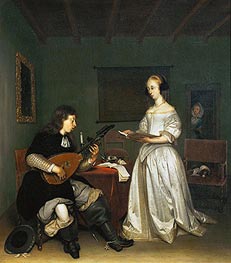
The Duet: Singer and Theorbo-Player 1669
Oil Painting
$2193
$2193
Canvas Print
$82.19
$82.19
SKU: GTB-14608
Gerard Ter Borch
Original Size: 82 x 72 cm
Louvre Museum, Paris, France
Gerard Ter Borch
Original Size: 82 x 72 cm
Louvre Museum, Paris, France
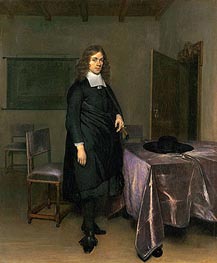
Portrait of a Gentleman n.d.
Oil Painting
$2005
$2005
Canvas Print
$77.09
$77.09
SKU: GTB-14609
Gerard Ter Borch
Original Size: unknown
Tiroler Landesmuseum Ferdinandeum, Innsbruck, Austria
Gerard Ter Borch
Original Size: unknown
Tiroler Landesmuseum Ferdinandeum, Innsbruck, Austria
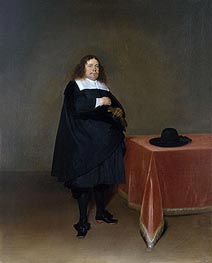
Burgomaster Jan van Duren c.1666/67
Oil Painting
$1897
$1897
Canvas Print
$75.21
$75.21
SKU: GTB-14610
Gerard Ter Borch
Original Size: 81.5 x 65.5 cm
Metropolitan Museum of Art, New York, USA
Gerard Ter Borch
Original Size: 81.5 x 65.5 cm
Metropolitan Museum of Art, New York, USA
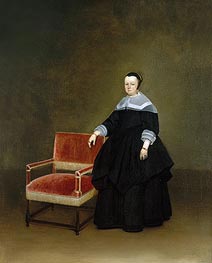
Margaretha van Haexbergen c.1666/67
Oil Painting
$1915
$1915
Canvas Print
$75.21
$75.21
SKU: GTB-14611
Gerard Ter Borch
Original Size: 81.3 x 65.1 cm
Metropolitan Museum of Art, New York, USA
Gerard Ter Borch
Original Size: 81.3 x 65.1 cm
Metropolitan Museum of Art, New York, USA
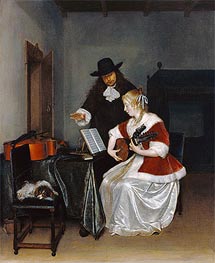
The Music Lesson c.1668
Oil Painting
$2111
$2111
Canvas Print
$76.57
$76.57
SKU: GTB-14612
Gerard Ter Borch
Original Size: 67.7 x 55 cm
J. Paul Getty Museum, Los Angeles, USA
Gerard Ter Borch
Original Size: 67.7 x 55 cm
J. Paul Getty Museum, Los Angeles, USA
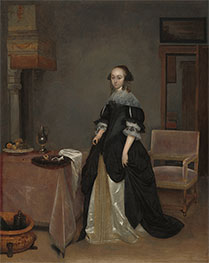
Maria van Suchtelen c.1666
Oil Painting
$2439
$2439
Canvas Print
$74.19
$74.19
SKU: GTB-17833
Gerard Ter Borch
Original Size: 80.5 x 63.8 cm
National Gallery of Art, Washington, USA
Gerard Ter Borch
Original Size: 80.5 x 63.8 cm
National Gallery of Art, Washington, USA
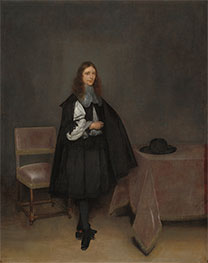
Gerhard van Suchtelen c.1666
Oil Painting
$1741
$1741
Canvas Print
$74.02
$74.02
SKU: GTB-17834
Gerard Ter Borch
Original Size: 80.7 x 63.8 cm
National Gallery of Art, Washington, USA
Gerard Ter Borch
Original Size: 80.7 x 63.8 cm
National Gallery of Art, Washington, USA